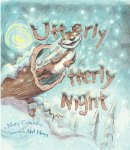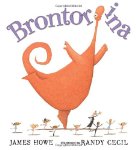These days, when I want to relax and give my brain a break, I read a mystery novel. I have always loved mysteries and read (and reread) all the Nancy Drew and Hardy Boys books when I was young. There were also the Famous Five and Secret Seven series, books that were published in England. I remember feeling rather disappointed that there weren't more mystery titles being published for young readers.
Today, young readers have a much bigger selection of mystery novels to read. In several of them the main character becomes a secret agent of some kind. Today's title is just such a book. In it a tween girl, Ruby Redfort, is asked to help a secret agency to solve a problem. The writing is clever, often humorous, and it is full of thrilling moments and interesting situations.
Lauren Child
Fiction
For ages 10 to 13
Candlewick Press, 2011, 978-0-7636-5120-6
Ruby Redfort looks like a rather ordinary tween girl, but
she is not in the slightest bit ordinary. She is extremely intelligent, can
learn new things very quickly, and she has superlative observation skills and
problem-solving skills. Ruby loves mystery and crime stories, movies, and
television shows. She also loves to figure out puzzles, ciphers, and codes.
Until now, other
than winning a Code-Cracking Championship and creating a code that took Harvard
scholars two weeks to break, Ruby has had a quiet life. She lives with her
rather uninteresting parents, spends time with her friend Clancy, and goes to
school. Then, one day, she comes home from school to find out that someone has
stolen everything in her house. Everything is gone including Mrs. Digby the
housekeeper. On that day Hitch, a household manager (butler), arrives to work at
the Redfort home, and Ruby is immediately suspicious. Something about Hitch is
off, but Ruby cannot figure out what.
Then Ruby gets a
very odd phone call. An unknown person tells Ruby that he or she has heard that
Ruby is good at noticing things and that she is also a good code cracker. The
person talks some more and Ruby agrees that she “can crack a code.” After
saying “Good,” the person hangs up. Ruby is very puzzled by the call. If the person
on the phone wants her to crack a code why didn’t the person give her a code to
crack?
Some time later
Ruby figures things out. The code was in the conversation itself. She analyses
what the person said and soon she is following clues, each clue leading her to
another one. The final clue leads her to a manhole cover. She opens it and
reluctantly goes down the drain and into a tunnel, which then opens into a very
large room. It is in this room that Ruby meets a woman called LB who just
happens to belong to the voice on the telephone.
LB explains that
she works for a secret agency called Spectrum, and she invites Ruby the join
the agency to help them deal with one problem and one problem only. If she is
willing to take on the challenge, Ruby will first have to pass a test and get cleared
by security. If she gets through these, she will be told about the problem,
which she will hopefully be able to solve. After the task is complete, Ruby
will go back to being an ordinary schoolgirl and her association with Spectrum
will be over.
Not surprisingly,
Ruby agrees to the terms. She passes the test and security check without any
trouble, and then she finds out that she has been recruited to break a code.
Someone is apparently planning to steal an enormous amount of gold from a local
bank. A former Spectrum code breaker figured out something important about the
plan, but she died before she could tell LB about what she had found. LB wants
Ruby to go through the deceased code breaker’s papers to figure out what it was
she was going to reveal.
Lauren Child has
delighted countless children by creating Charlie and Lola and Clarice Bean,
wonderful characters who appear in picture books, novels, and in television
programs. Now she gives us Ruby Redfort, and readers will have a splendid time
sharing Ruby’s adventures and trying to figure out the codes and puzzles Ruby
encounters. Who can resist a story that is packed with colorful characters,
unsolved mysteries, cool gadgets, and challenging puzzles.









